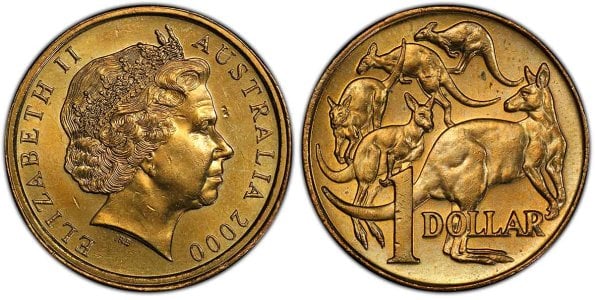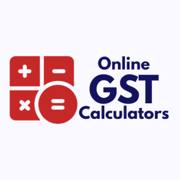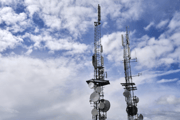Discover the $1 coin in your wallet that might make you a fortune overnight!
- Replies 5
Attention, Aussie seniors and coin enthusiasts! It's time to rummage through your coin jars, check under those couch cushions, and inspect your wallets.
You might just be carrying around a small fortune without even realising it.
A particular $1 coin minted 24 years ago could be worth thousands of dollars today—and it could be hiding in plain sight among your loose change.
This isn't just any ordinary $1 coin; it's a rare numismatic anomaly known as a ‘mule’ coin.
Back in 2000, the Royal Australian Mint made a tiny but significant error. While the reverse side of the coin features the standard $1 design we're all familiar with, the front was mistakenly struck using a die intended for a 10-cent piece.
This resulted in a distinctive secondary border that sets it apart from regular $1 coins.

Mark Nemtsas from The Purple Penny, a renowned coin expert, has shed light on this fascinating error.
He revealed that tens of thousands of these mule coins slipped into circulation.
‘One found in change today might be worth $200-$300,’ Mr Nemtsas said.
However, some current listings have prices ranging from $995 to $6,500, with higher valuations based on the coin's condition.
Mr Nemtsas suggested that ‘mules’ in excellent, uncirculated condition could command higher prices.
‘An uncirculated example might be worth a few thousand, but there's no chance of finding one of those after 24 years of circulation,’ he pointed out.
For those of you considering purchasing one of these rare coins as an investment or for your personal collection, proceed with caution.
The online marketplace can be a minefield when it comes to verifying the authenticity of expensive coins.
It's recommended to look for coins certified by the Professional Coin Grading Service (PCGS), which are deemed more trustworthy.
PCGS evaluates coins based on various factors, including appearance and mintage, which are crucial in determining their value.
Coin errors like this are not just a numismatist's dream; they can significantly increase a coin's value, especially when the mistake is as rare as the 2000 $1 mule.
Although the exact number of these coins produced remains a mystery, PCGS estimates that only about 20,000 were minted. This scarcity has turned the coin into a classic among collectors.
The PCGS stated that the coin became a collector's classic when it was first found in 2000.
‘Everyone had a chance of finding one and, as the media reported discoveries and the coin became more widely known, the chase to find an example in one's change became even more frantic,’ they said.
A collector in Perth discovered 180 mules over two years by searching through poker machine coin bins.
Out of the 500 coins examined by PCGS so far, only five have received the PCGS MS64 grade, with four of those residing in private collections.
This top rating is given to coins that have an ‘average or better strike with scattered marks or hairlines, though none severe’, making such high-quality examples quite rare.
While rare coins continue to captivate collectors with their surprising value, a recent discovery highlights how even seemingly ordinary coins can hold hidden worth.
For example, a coin once thought to be common has recently made headlines for its surprising market value, reaching thousands of dollars at auction.
This trend of undervalued currency is not limited to high-profile finds; in fact, there could be coins sitting in your own pockets worth a small fortune.
If you think your loose change is only good for coffee, think again—some coins could be worth up to $6,000!
 Have you or someone you know ever come across a rare coin? What did you do with it? Share your stories with us in the comments below if you've ever found a rare coin or if you're planning to start the search. Who knows, you might just inspire your fellow members to discover hidden treasures of their own!
Have you or someone you know ever come across a rare coin? What did you do with it? Share your stories with us in the comments below if you've ever found a rare coin or if you're planning to start the search. Who knows, you might just inspire your fellow members to discover hidden treasures of their own!
You might just be carrying around a small fortune without even realising it.
A particular $1 coin minted 24 years ago could be worth thousands of dollars today—and it could be hiding in plain sight among your loose change.
This isn't just any ordinary $1 coin; it's a rare numismatic anomaly known as a ‘mule’ coin.
Back in 2000, the Royal Australian Mint made a tiny but significant error. While the reverse side of the coin features the standard $1 design we're all familiar with, the front was mistakenly struck using a die intended for a 10-cent piece.
This resulted in a distinctive secondary border that sets it apart from regular $1 coins.

Australians are urged to check their change for a rare 2000 ‘mule’ $1 coin, potentially worth thousands. Credit: PCGS
Mark Nemtsas from The Purple Penny, a renowned coin expert, has shed light on this fascinating error.
He revealed that tens of thousands of these mule coins slipped into circulation.
‘One found in change today might be worth $200-$300,’ Mr Nemtsas said.
However, some current listings have prices ranging from $995 to $6,500, with higher valuations based on the coin's condition.
Mr Nemtsas suggested that ‘mules’ in excellent, uncirculated condition could command higher prices.
‘An uncirculated example might be worth a few thousand, but there's no chance of finding one of those after 24 years of circulation,’ he pointed out.
For those of you considering purchasing one of these rare coins as an investment or for your personal collection, proceed with caution.
The online marketplace can be a minefield when it comes to verifying the authenticity of expensive coins.
It's recommended to look for coins certified by the Professional Coin Grading Service (PCGS), which are deemed more trustworthy.
PCGS evaluates coins based on various factors, including appearance and mintage, which are crucial in determining their value.
Coin errors like this are not just a numismatist's dream; they can significantly increase a coin's value, especially when the mistake is as rare as the 2000 $1 mule.
Although the exact number of these coins produced remains a mystery, PCGS estimates that only about 20,000 were minted. This scarcity has turned the coin into a classic among collectors.
The PCGS stated that the coin became a collector's classic when it was first found in 2000.
‘Everyone had a chance of finding one and, as the media reported discoveries and the coin became more widely known, the chase to find an example in one's change became even more frantic,’ they said.
A collector in Perth discovered 180 mules over two years by searching through poker machine coin bins.
Out of the 500 coins examined by PCGS so far, only five have received the PCGS MS64 grade, with four of those residing in private collections.
This top rating is given to coins that have an ‘average or better strike with scattered marks or hairlines, though none severe’, making such high-quality examples quite rare.
While rare coins continue to captivate collectors with their surprising value, a recent discovery highlights how even seemingly ordinary coins can hold hidden worth.
For example, a coin once thought to be common has recently made headlines for its surprising market value, reaching thousands of dollars at auction.
This trend of undervalued currency is not limited to high-profile finds; in fact, there could be coins sitting in your own pockets worth a small fortune.
If you think your loose change is only good for coffee, think again—some coins could be worth up to $6,000!
Key Takeaways
- Australians are encouraged to check their change for a rare $1 coin known as a 'mule,' which was mistakenly struck in 2000 and may be worth thousands of dollars.
- The mule coin has an almost imperceptible error with a distinctive secondary border caused by being struck with a 10-cent piece die on its obverse side.
- Coins in pristine, uncirculated condition can fetch higher prices, with values ranging from $200-$300 for circulated ones to several thousands for uncirculated examples.
- The authenticity of expensive coins can be verified by services like the Professional Coin Grading Service (PCGS), and only about 20,000 of these mule coins were estimated to have been minted, which adds to their rarity and value.







